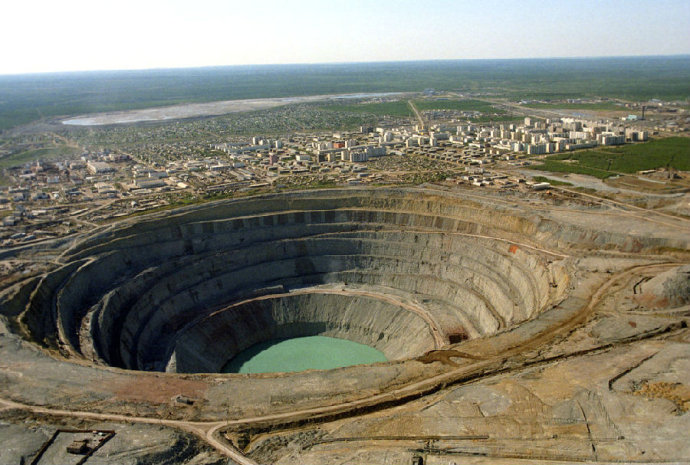Because we can't see into the Earth, we have to use other techniques, which mostly involve reading waves as they travel through the interior. We also know a little bit about the mantle from what are known as kimberlite pipes, where diamonds are formed. What happens is that deep in the Earth there is an explosion that fires, in effect, a cannonball of magma to the surface at supersonic speeds. It is a totally random event. A kimberlite pipe could explode in your backyard as you read this.

Because they come up from such depths—up to 120 miles down—kimberlite pipes bring up all kinds of things not normally found on or near the surface: a rock called peridotite, crystals of olivine, and—just occasionally, in about one pipe in a hundred—diamonds. Lots of carbon comes up with kimberlite ejecta, but most is vaporized or turns to graphite. Only occasionally does a hunk of it shoot up at just the right speed and cool down with the necessary swiftness to become a diamond. It was such a pipe that made Johannesburg the most productive diamond mining city in the world, but there may be others even bigger that we don't know about. Geologists know that somewhere in the vicinity of northeastern Indiana there is evidence of a pipe or group of pipes that may be truly colossal. Diamonds up to twenty carats or more have been found at scattered sites throughout the region. But no one has ever found the source. As John McPhee notes, it may be buried under glacially deposited soil, like the Manson crater in Iowa, or under the Great Lakes.












